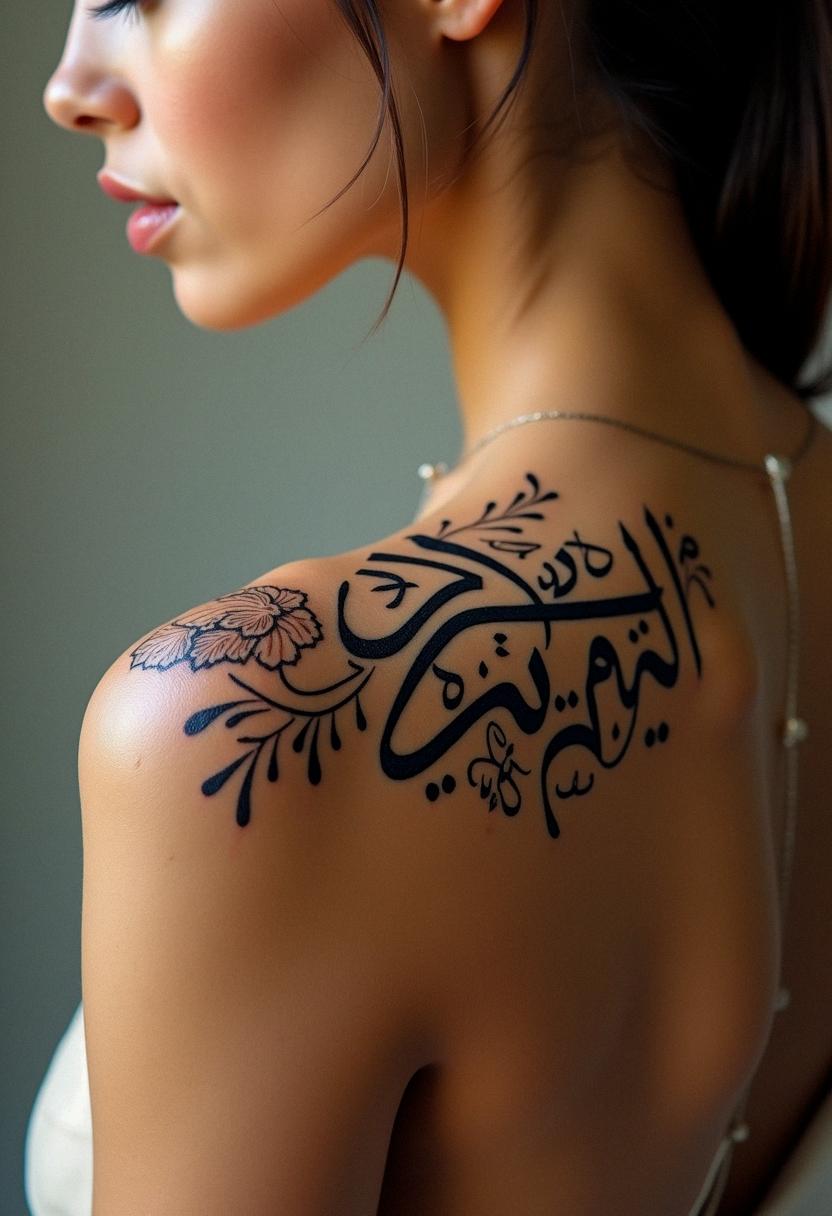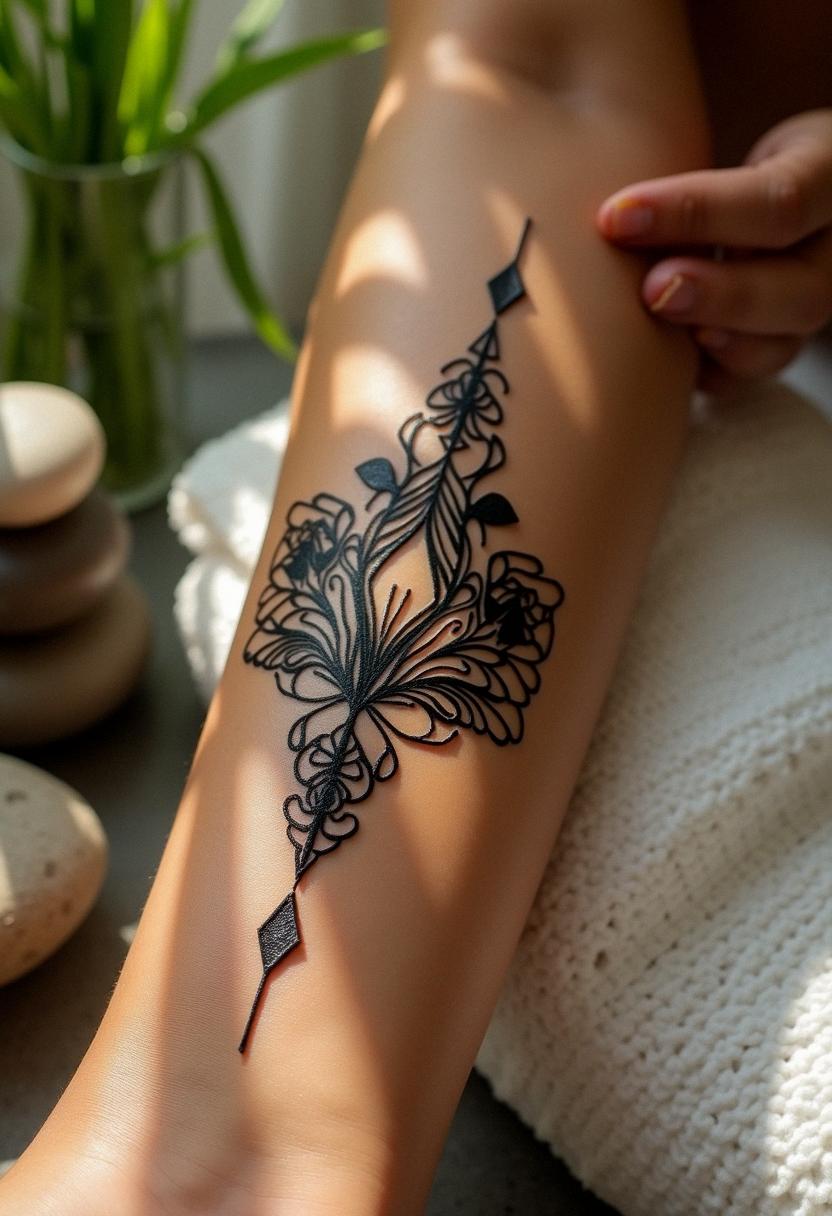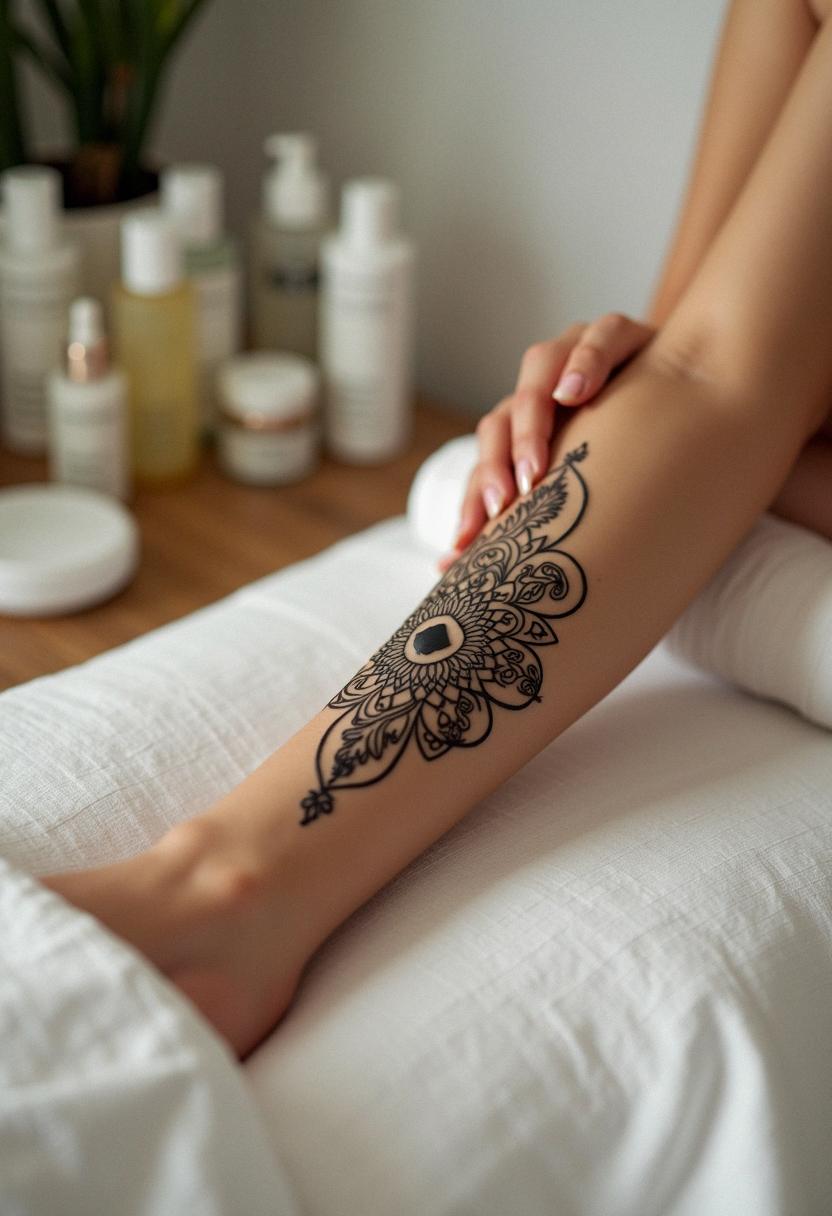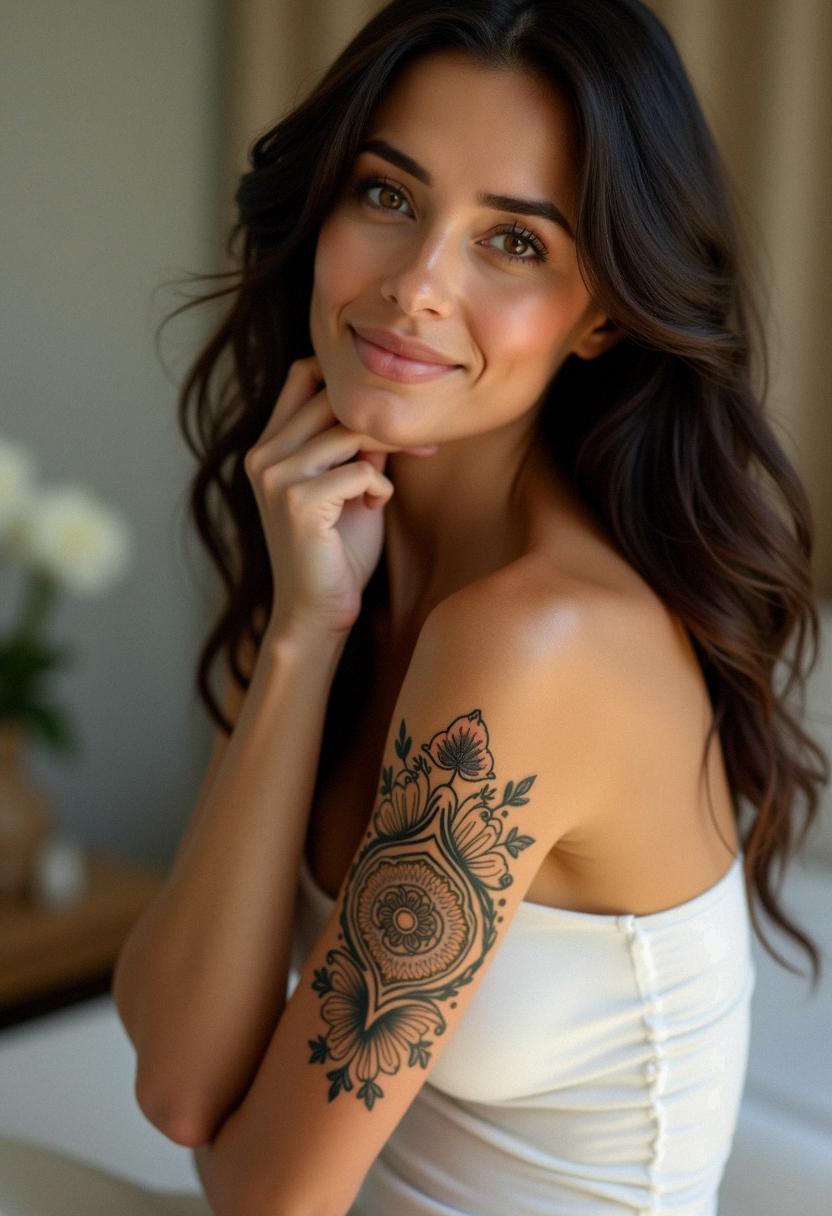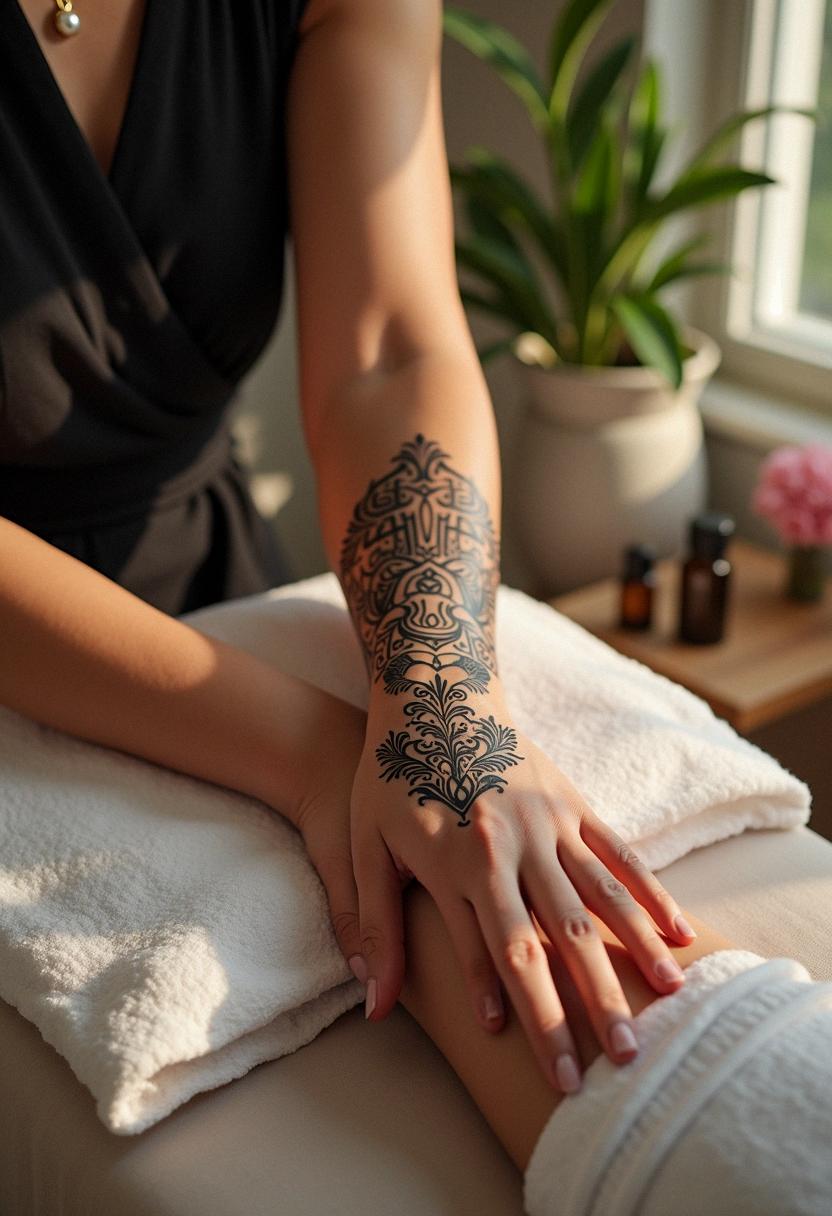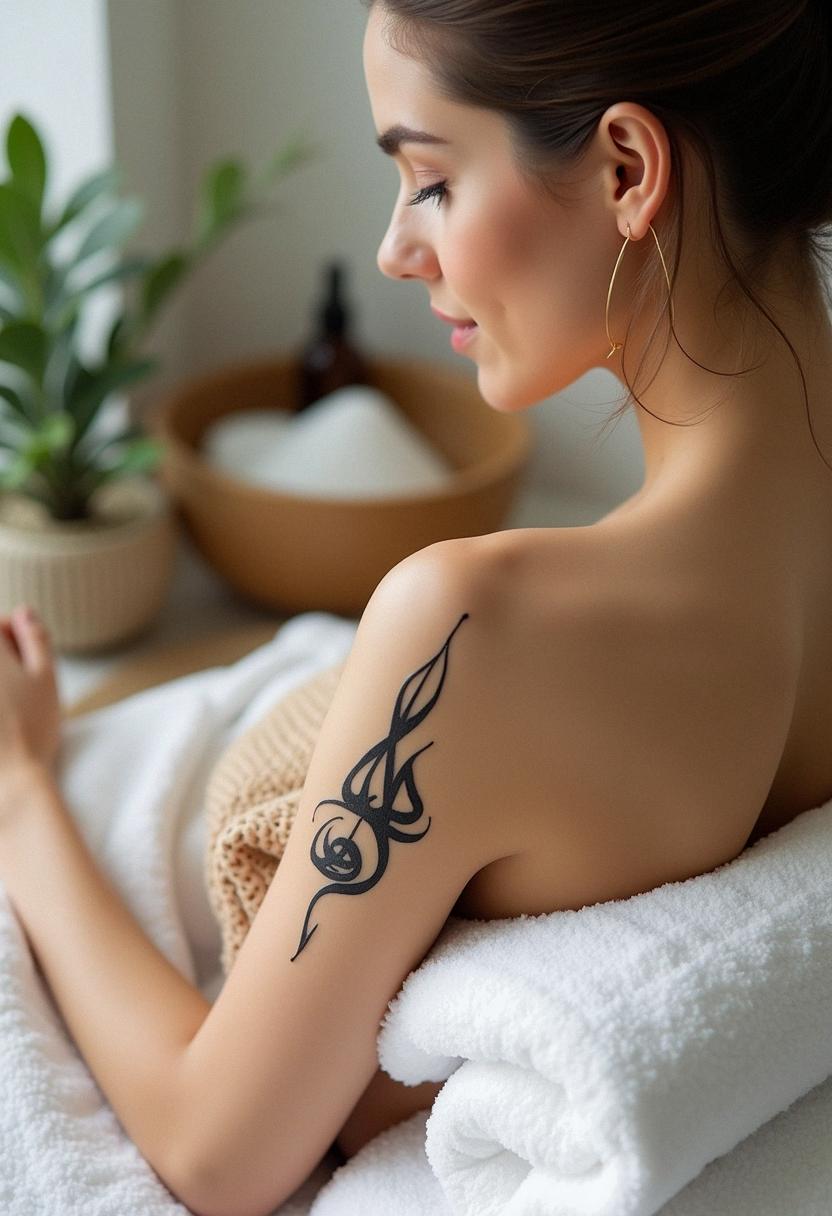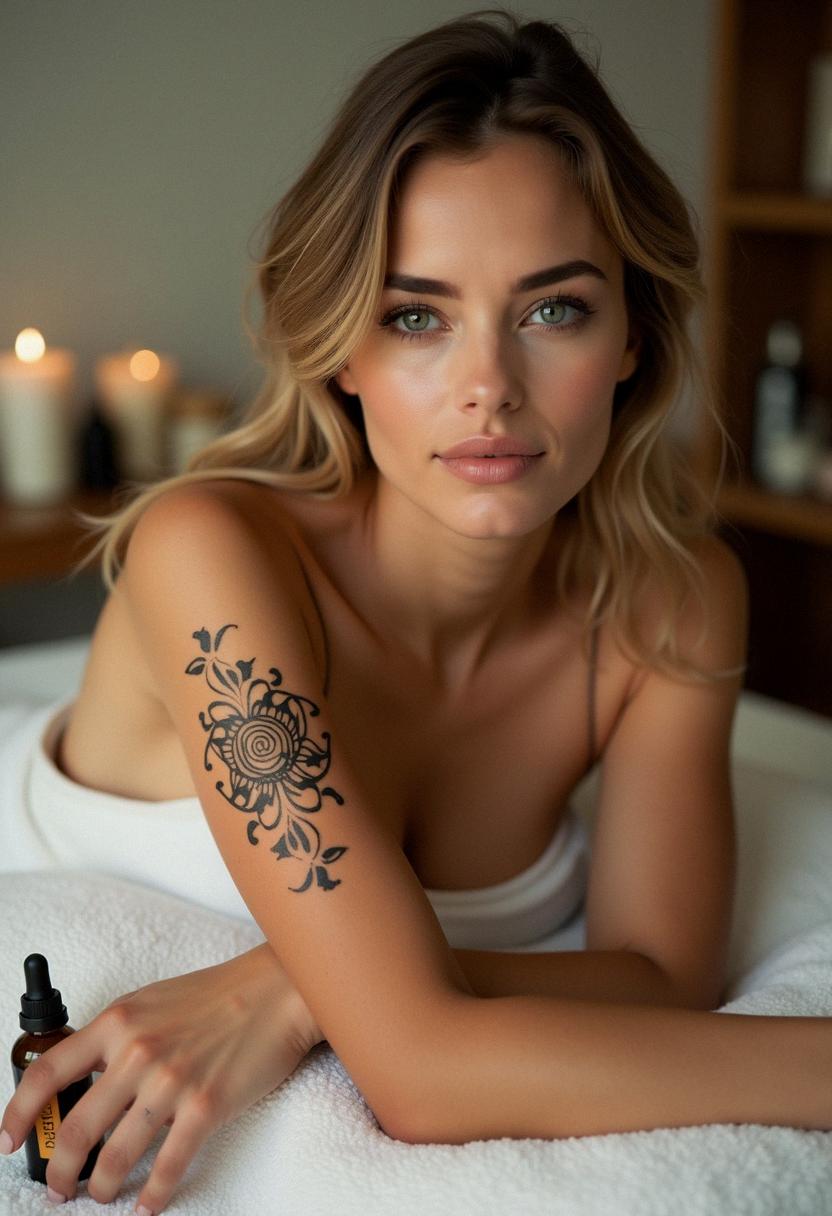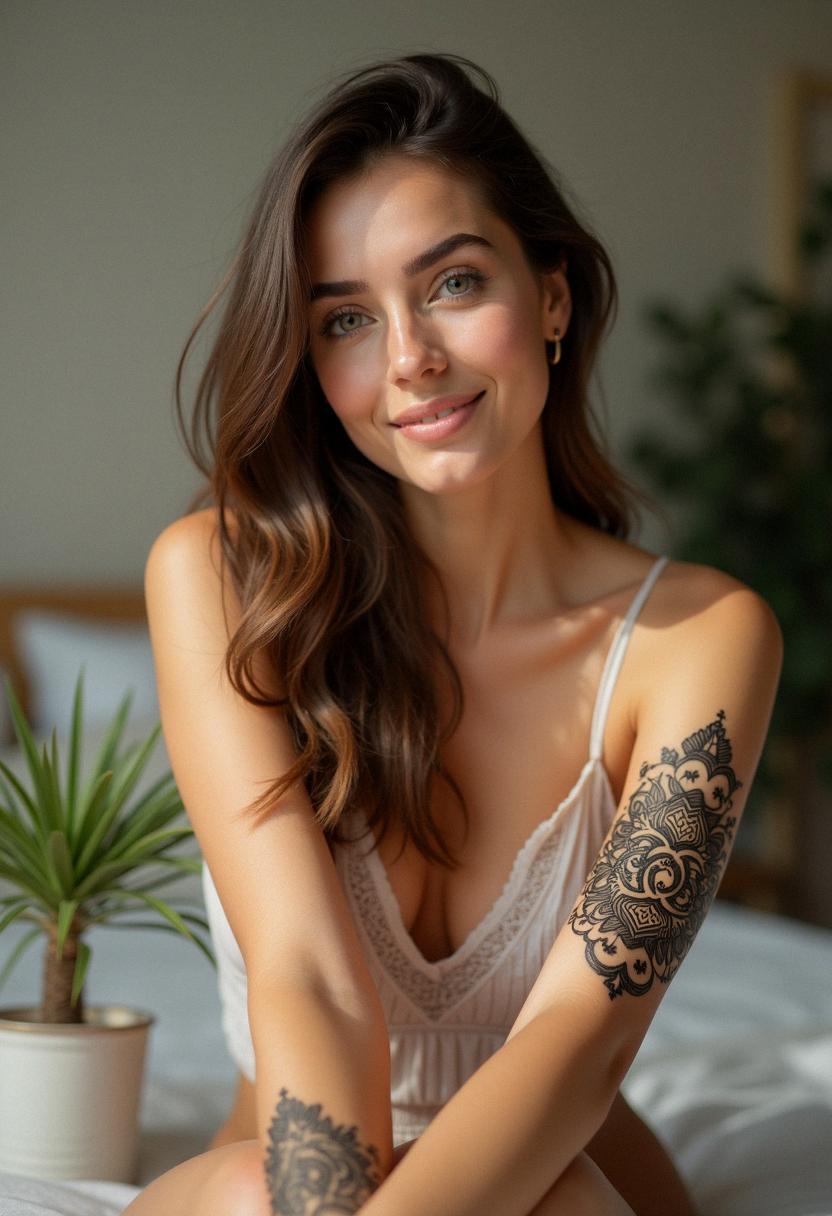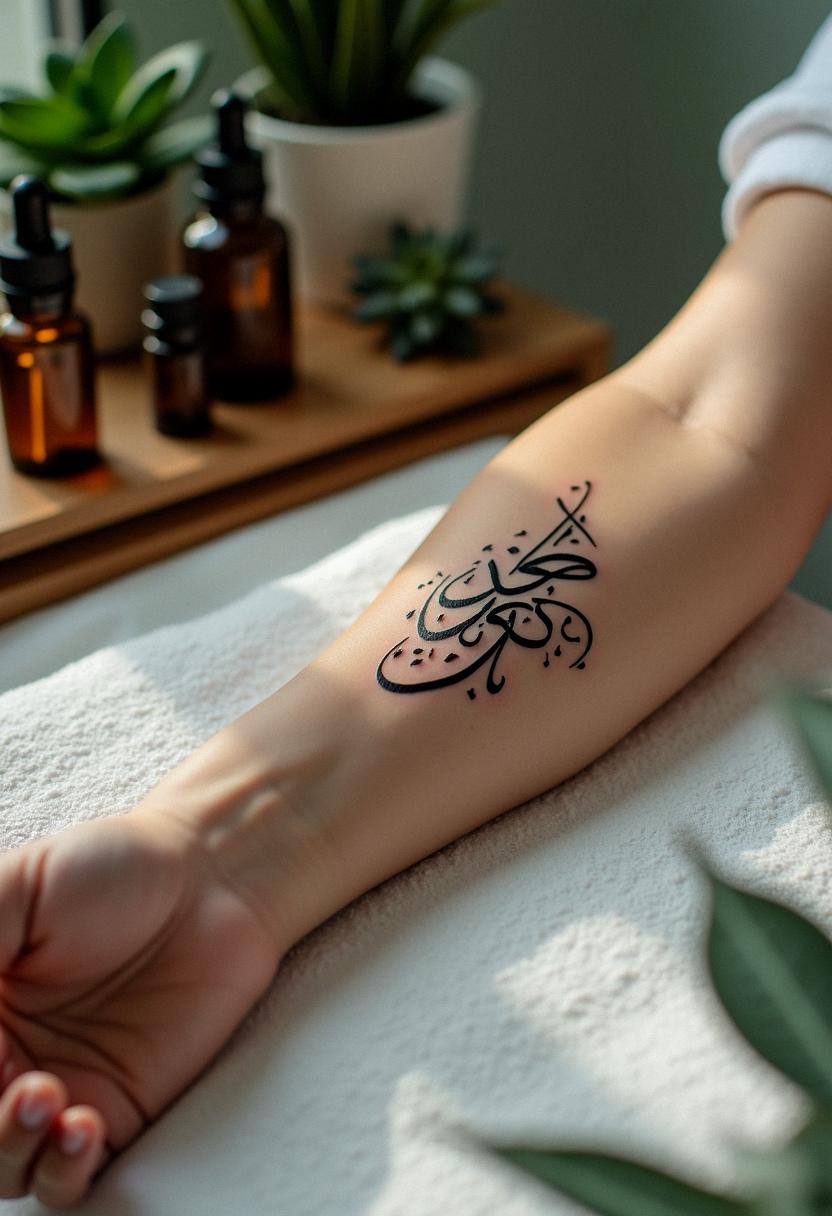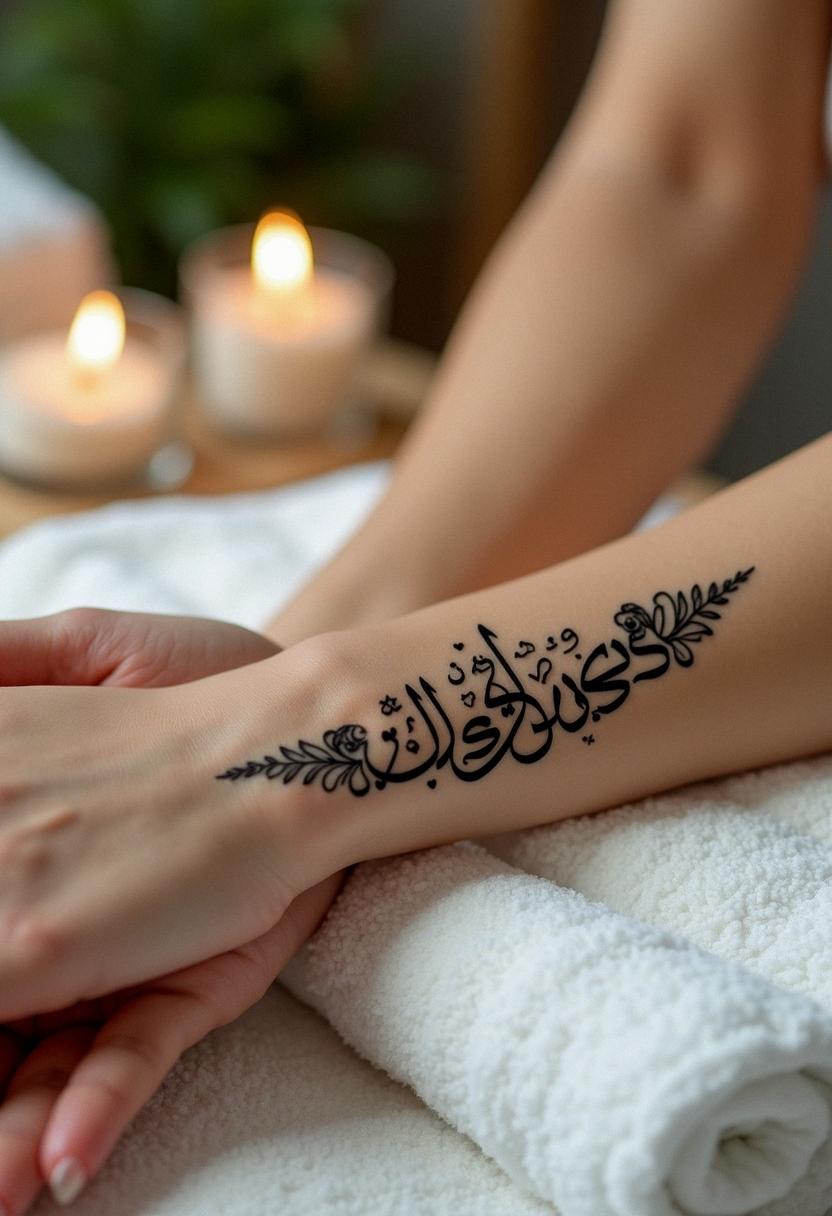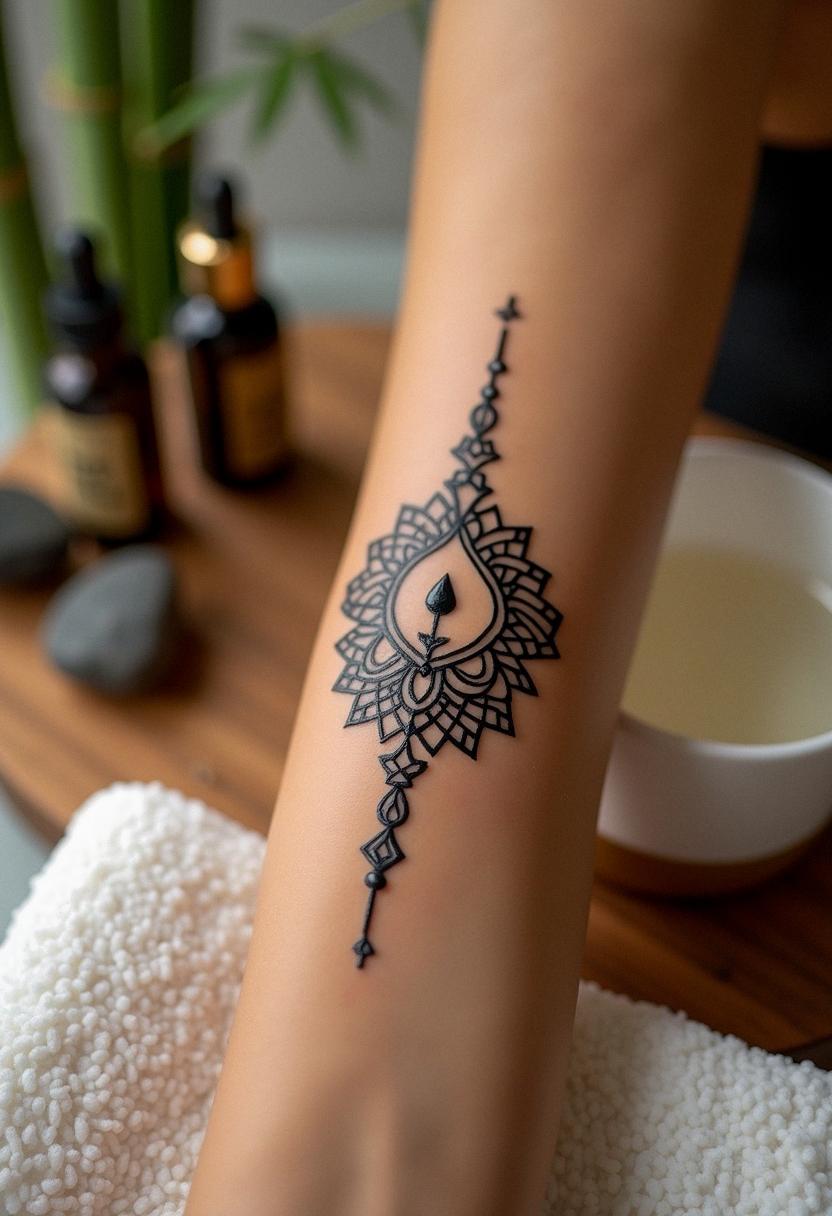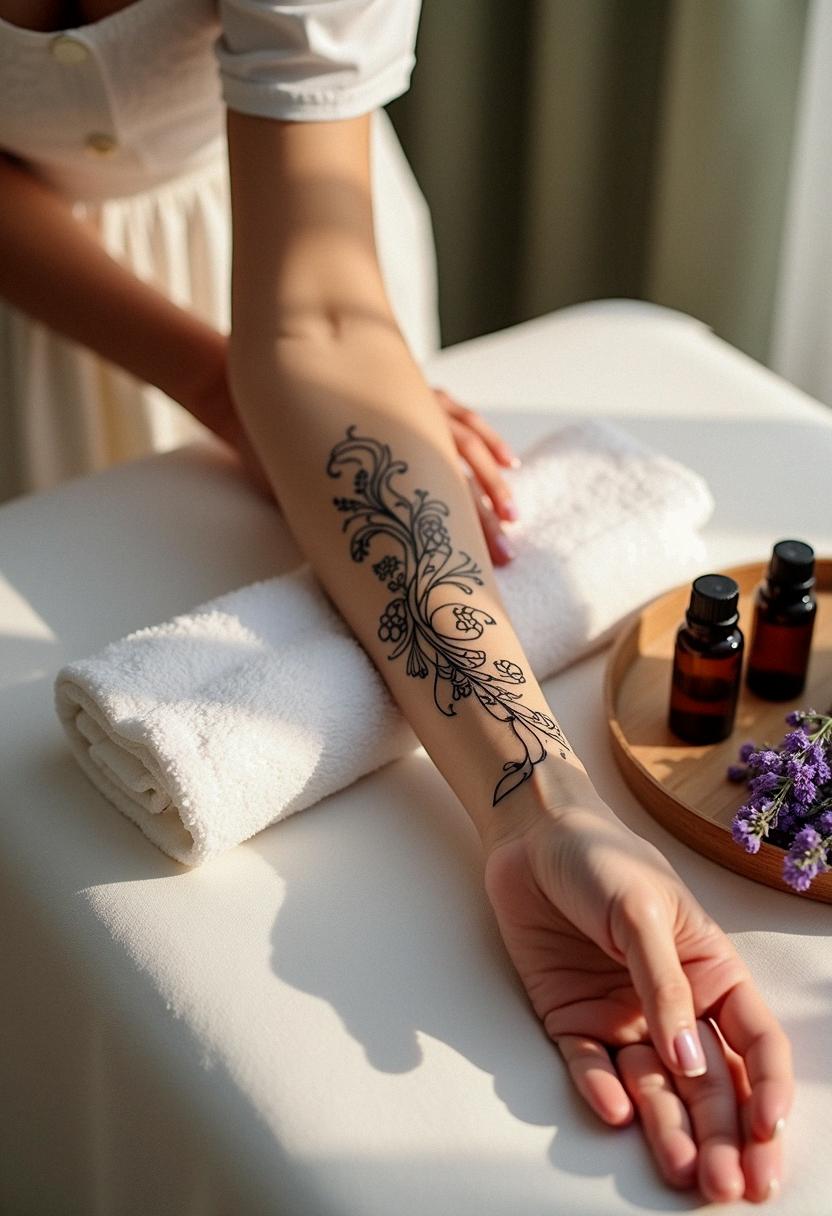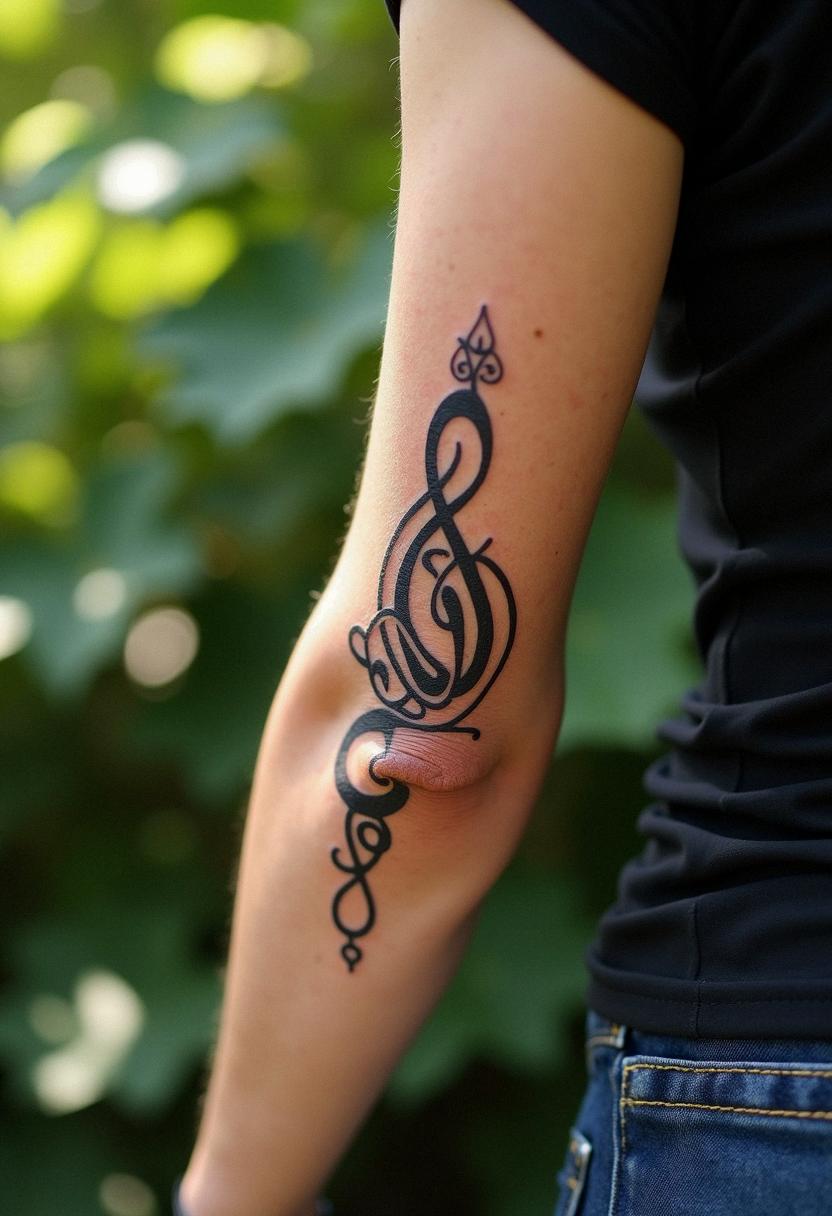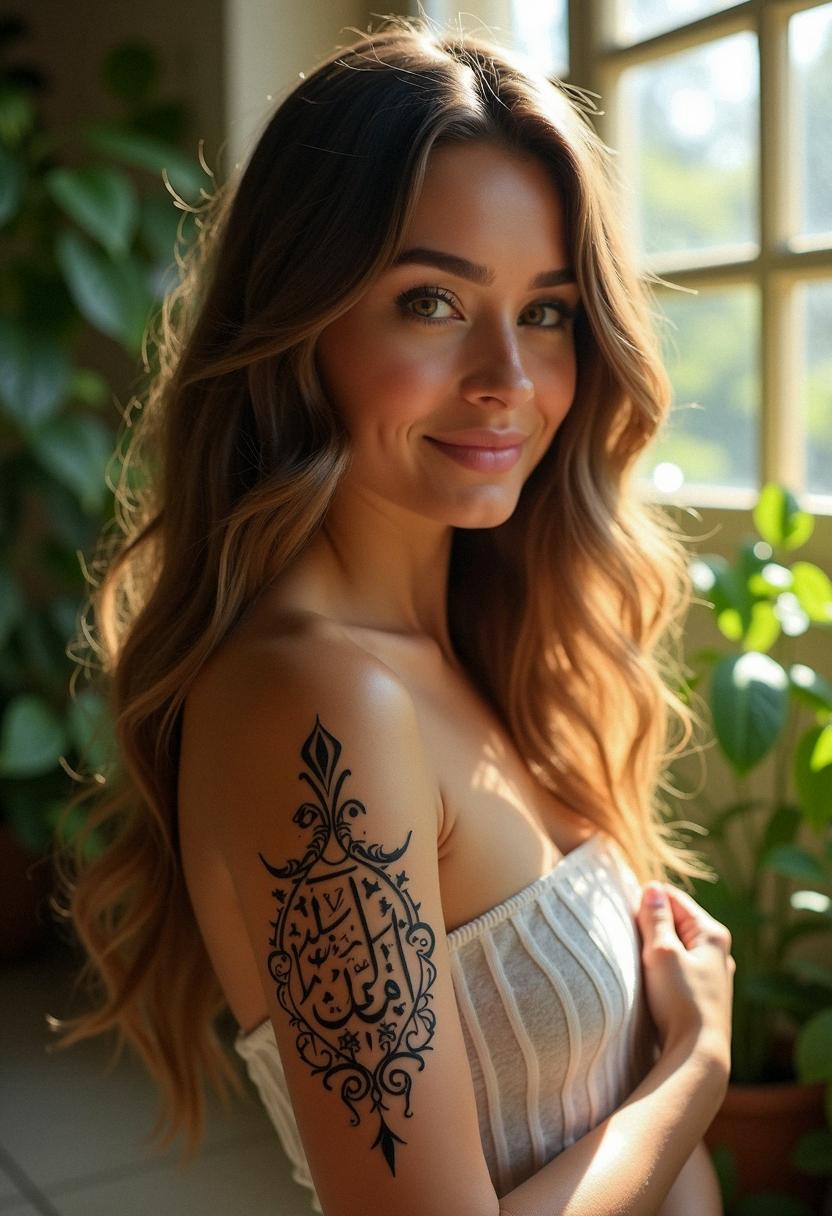The allure of Arabic tattoos has captivated a diverse audience, drawing in those who seek a connection to a rich cultural heritage and the mesmerizing beauty of Arabic calligraphy. For many, an Arabic tattoo is far more than just a design; it represents a personal story, an artistic journey, and a symbolic link to ancient traditions that span centuries. I’ve found that the intricate strokes and flowing forms speak directly to the soul of anyone who appreciates art steeped in meaning and heritage. This growing trend offers a vibrant mix of bold expression and subtle nuance, intertwining modern creativity with the time-honored craft of Arabic script. It’s fascinating how each curve and dot can encapsulate a message of empowerment, love, or personal growth, creating a permanent and ever-evolving canvas on the body. As you embark on your exploration of Arabic tattoo artistry, you’ll discover that each design holds layers of significance, urging you to delve into the cultural narratives behind them. By studying these stunning creations, you begin to understand why these tattoos resonate with so many. Their rise in popularity is no accident—they speak to a universal desire for beauty and meaning, captured in every elegant flourish and carefully considered detail that makes an Arabic tattoo so uniquely compelling.
Understanding the Art of Arabic Calligraphy and Script
Arabic calligraphy is a treasure trove of visual splendor and artistic mastery that has been cherished and refined over generations. When you look at Arabic script, you see more than just letters; you witness a dance of curves and angles that blend simplicity with complexity in an eye-catching display of fluidity and grace. I appreciate the way these artistic strokes are not only designed to be read, but also to be admired as standalone works of art. In every tattoo, the intricacy of the calligraphic style invites you to pause and admire the careful craftsmanship behind each line. Artists painstakingly create designs that are as much about form as they are about meaning, ensuring that every flourish is intentional and every dot serves a purpose. The beauty lies in how each design evolves from traditional scripts while embracing modern aesthetics, allowing the art to morph into a personal expression of identity. You might even find yourself immersed in the stories of ancient poets and scholars through the symbolic beauty of the letters. This captivating blend of art, history, and personal significance transforms a tattoo into a living narrative that continues to inspire and challenge our perceptions of what body art can be.
Exploring the Cultural and Historical Significance Behind Arabic Tattoos
Arabic tattoos carry a profound history that brings together elements of culture, spirituality, and artistic brilliance. Delving into their origins, you quickly realize that these tattoos are rooted in a tradition steeped in literature, religion, and the poetic soul of centuries past. The scripts often tell tales of wisdom, love, and resilience, drawing from a legacy that has evolved with time yet remains intimately connected to its roots. For many enthusiasts, opting for an Arabic tattoo isn’t just a fashion statement—it’s a way to honor and remember a lineage of storytelling that transcends modern boundaries. Every trace of ink can be seen as a tribute to the ancient masters who cherished the beauty of language and symbolism. I find it remarkable how the mere act of adorning one’s skin with these designs serves as a respectful nod to a culture that values artistic expression and intellectual depth. It’s this blend of historical reverence and aesthetic charm that gives each Arabic tattoo its unique voice. As you learn more about these symbols, you begin to appreciate how the past and present converge in each carefully designed stroke, offering not only a lasting piece of art but also a bridge to a rich and multifaceted cultural heritage.
Popular Arabic Tattoo Designs and Their Meanings
Arabic tattoo designs are as varied and expressive as the letters themselves, each carrying its own unique symbolism and personal message. I’ve observed that many people choose words or phrases that resonate deeply with their personal journey, whether it be words like *love*, *courage*, or *honor* presented in elegant script, or entire verses that weave together aspects of faith and personal reflection. Some designs draw inspiration from traditional calligraphy, blending poetic verses with modern interpretations, resulting in tattoos that are both visually striking and payloads of meaning. Others might opt for minimalist renderings that focus on a single word, a succinct yet powerful nod to cherished values. When selecting a design, everyone seems to strive for a narrative that complements their lifestyle, with each stylistic nuance—be it the thickness of a line or the curvature of a stroke—playing a subtle yet influential role in conveying a story. By taking the rich and diverse meanings behind these tattoos into account, you ensure that every design not only captures the essence of Arabic art but also reflects personal significance. The fusion of timeless wisdom with contemporary flair offers a canvas that is as dynamic as it is personal, making each tattoo a living testament to the beauty of language and the power of self-expression.
Choosing the Perfect Arabic Tattoo: Style, Font, and Personal Relevance
Picking the ideal Arabic tattoo design is all about aligning your personal story with the artistic rendition of Arabic script. As you dive into the world of style and font options, you’ll notice that each calligraphic style carries its own weight of tradition, making the decision a delightful but sometimes challenging journey. I encourage you to consider what each design element signifies—not just the form of the letter, but the emotion and history it carries. For instance, bolder fonts might resonate if you’re looking to make a strong statement, while more delicate, flowing scripts can evoke a sense of grace and subtle beauty, mirroring the intricacies of your own narrative. Your choice often depends on where you’re coming from and where you hope to go, and this is a wonderful chance to reflect on your personal milestones. The interplay between the chosen font and your personal meaning creates a harmonious balance, ensuring that your tattoo is not simply decorative but a tangible piece of your personality. It’s essential to weigh both the artistic flair and the intimate significance of the words or phrases you choose, making sure they resonate with your inner self. In this journey, the art becomes a mirror to your soul and a celebration of life’s delicate yet fierce beauty.
Finding a Skilled Tattoo Artist Specializing in Arabic Designs
Locating the right artist who can translate your vision into a stunning Arabic tattoo is one of the most vital steps in your creative journey. I’ve encountered many cases where the perfect match of artist and design turned an ordinary piece of body art into an unforgettable masterpiece. The process starts with doing your homework, possibly visiting local galleries or online portfolios dedicated to Arabic calligraphy tattoos. When you meet these artists, engage in a genuine conversation about your ideas and see if they grasp the cultural nuances and artistic details that make Arabic tattoos stand out. Their expertise isn’t just about mimicking beautiful script; it’s about understanding the depth of history, symbolism, and personal relevance that each design carries. I often remind friends that communication with your artist should be as fluid as the calligraphic strokes they create. Ask for samples, discuss previous projects, and ensure their style meshes with your vision. Through this detailed process, you can build trust, ensuring that the profound narrative behind your tattoo is handled with both artistic brilliance and cultural sensitivity. After all, the stained glass of your body deserves an artist who can weave magic into each line and letter.
Navigating Cultural Respect and Appropriation in Arabic Tattoo Art
Embracing the art of Arabic tattoos also invites a thoughtful reflection on cultural respect and the fine line between appreciation and appropriation. I’ve seen plenty of conversations emerge around the ethical use of culturally significant symbols, and it’s essential to approach these designs with both curiosity and sensitivity. Many who choose to honor the beauty of Arabic calligraphy do so with the intention of paying homage to a culture rich in history and tradition, rather than simply following a trend. Engaging deeply with the meanings behind the symbols and seeking a thorough understanding of their origins can help you become a more informed and respectful wearer of these designs. Always strive to learn from reliable sources and, if possible, involve voices from the communities associated with these cultural symbols. By doing so, you foster a respectful dialogue that bridges different cultures while celebrating artistic diversity. I find that incorporating this mindful approach not only enriches your personal experience but also contributes positively to a larger, more respectful global community. Ultimately, your tattoo should reflect both an aesthetic choice and a sincere respect for the heritage it represents, ensuring that your art remains a tasteful celebration of cross-cultural beauty.
Tattoo Placement, Size, and Color Considerations for Arabic Scripts
When planning your Arabic tattoo, you might wonder about the optimal placement, size, and color to best highlight the elegance of the script. I’ve noticed that every detail plays a pivotal role in the final outcome, transforming a beautiful design into a harmonious piece of art that feels right for your body and style. For some, a discreet placement can offer a personal, almost secret connection to the tattoo’s meaning, while others may prefer a more visible location to spark conversations and showcase their artistic statement. The size of the tattoo also matters—a larger canvas allows for more intricate details and a richer display of the calligraphic art, capturing the fluidity and profound elegance of Arabic script. On top of that, the color choice can dramatically change the mood of the design. Some people opt for bold colors that stand out as vibrant declarations of individuality, while many imagine their tattoo in classic black or deep blues to emphasize a timeless aesthetic. I always advise considering how the tattoo will age with you over the years, ensuring that the colors and details remain just as captivating as they were on day one. This reflective process enables you to create a piece that not only looks exciting initially but continues to resonate with you throughout your life.
Care, Maintenance, and Longevity of Arabic Tattoos
Taking care of your Arabic tattoo is an integral part of its journey from a work of art to a lasting personal emblem. I often emphasize that proper maintenance allows your tattoo to remain as vibrant and meaningful as the day it was inked, preserving the clear strokes and intricate designs that make Arabic calligraphy so enchanting. Regular aftercare, including careful cleaning and the application of soothing lotions, is essential to ward off infections and encourage proper healing. Over time, factors like sun exposure and skin aging can subtly alter the appearance of even the most expertly done tattoos. That’s why it’s a smart move to use sunblock and moisturizers, ensuring that vibrant hues and fine details continue to shine. In my experience, the longevity of any tattoo is not just about aesthetics—it forms part of the narrative of your personal expression. Each stage of the healing process offers a chance to dedicate extra care and attention, reinforcing the bond you’ve established with the art on your skin. Embracing a proactive approach means your Arabic tattoo, full of cultural allure and artistic brilliance, will remain a cherished part of your ever-evolving story.
Modern Trends and Innovations in Arabic Tattoo Culture
The world of Arabic tattoos is continually evolving, merging traditional techniques with modern trends to create designs that are both timeless and cutting-edge. I’ve seen a fascinating shift as artists experiment with vibrant colors, abstract forms, and even integration with digital art styles, resulting in pieces that are truly ahead of their time. These innovative twists enable the revered elegance of Arabic calligraphy to blend seamlessly with contemporary artistic visions. The infusion of modern media, from minimalist designs to large, intricate sleeves, illustrates how cultural heritage can be reimagined without losing its original spirit. Enthusiasts and tattoo artists alike are pushing boundaries to redefine what an Arabic tattoo can be, offering a fresh, revitalized look that speaks to today’s dynamic world. Many of these trends also emphasize customizing the artwork to reflect personal stories and identities, making each tattoo as unique as the individual sporting it. I find it incredibly exciting how these innovations create a vibrant dialogue between the past and the present, ensuring that Arabic tattoo culture continues to thrive as a living, evolving art form.
Personal Stories and Testimonials: Living with an Arabic Tattoo
Every Arabic tattoo carries a tale, a personal narrative that goes far beyond the visible art on one’s skin. I’ve had the pleasure of hearing heartfelt stories from friends and acquaintances who regard their tattoos as cherished markers of life’s transformative moments. For many, the tattoo stands as a daily reminder of overcoming challenges, celebrating milestones, or honoring significant relationships. These stories are laced with emotion, reflecting how each Arabic character, with its artistic elegance, embodies a deeper sentiment. When you converse with someone about their Arabic tattoo, chances are you’ll discover layers of meaning interwoven with memories, cultural pride, and personal growth. This rich tapestry of narrative lends the tattoos an authenticity that resonates on a profoundly human level. It’s as if each carefully inked letter whispers tales of their journey, providing inspiration and a sense of comfort to those who need it most. I’ve found that these testimonials not only celebrate the beauty of the art itself but also serve as powerful reminders of our shared experiences, struggles, and successes. In sharing these personal stories, we come to appreciate that an Arabic tattoo is more than just a design—it’s a living, breathing chronicle of one’s life.
Embracing the Unique Narrative of Arabic Tattoo Art
In the grand tapestry of body art, Arabic tattoos stand apart with a profound blend of elegance, history, and personal significance. I believe that each of these tattoos encapsulates far more than beautiful design—they embody a narrative that is both timeless and deeply personal. When you choose an Arabic tattoo, you’re not merely selecting a trendy decoration; you’re investing in a piece of art that bridges cultures, tells a saga, and speaks directly to your heart. The careful interplay of style, cultural respect, and individual meaning ensures that your tattoo remains a celebrated aspect of your identity through the years. This journey of self-expression, enriched by the artistry and historical depth of Arabic calligraphy, offers a unique opportunity to honor both your past and your present. I’ve always admired how this art form manages to capture diverse emotions in a single glance, turning your skin into a canvas of profound storytelling. With every glance at your tattoo, you reconnect with the heritage and the personal memories it represents, making it a timeless testament to your life’s journey. Ultimately, embracing the unique narrative of Arabic tattoo art means celebrating the blend of tradition and innovation, ensuring that the beauty etched on your skin continues to inspire and resonate for years to come.

